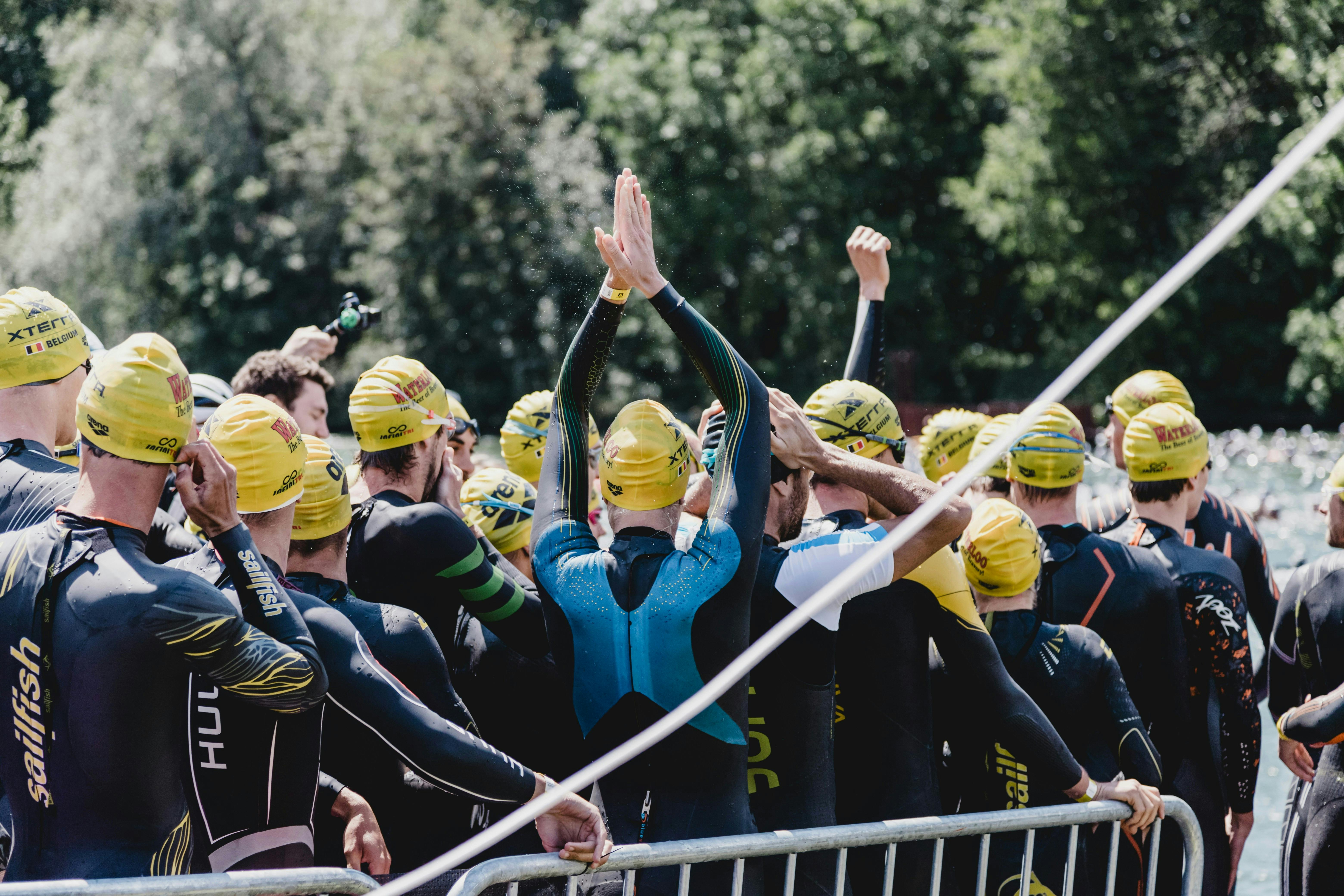5 Ways To Train For A Sprint Triathlon

By Coach Raeleigh
|Dec 2, 2022

Train smart, race fast. Here's how to prepare for one of the most intense (and fun!) endurance events.
Sprint triathlons are short—but don’t mistake that for easy. With a 750m swim, 20k bike, and 5k run, the pace is high, the transitions are quick, and the margin for error is small. Whether you're a first-timer or a seasoned athlete switching gears from long course, training for a sprint triathlon requires a specific, intensity-focused approach.
Here are five key ways to structure your training and race preparation for sprint-distance success.
1. Prioritize the Right Energy Systems
Sprint triathlons are short in duration (typically 60 to 105 minutes), but they demand a much higher intensity. That means spending more training time in Zone 4 (your lactate threshold zone) to build speed endurance and develop your ability to tolerate discomfort. Think: comfortably uncomfortable.
But don’t ditch your base: Zone 2 training still plays a crucial role in improving aerobic efficiency and supporting overall endurance.
Training Tip: Alternate between threshold intervals (Zone 4) and endurance rides/runs (Zone 2) throughout your weekly plan.
2. Keep Sessions Short, Focus on Recovery
Sprint training doesn’t mean endless hours. Most workouts will be shorter but sharper:
Swim: 20–30 minutes
Bike: 40–90 minutes
Run: 20–60 minutes
Since intensity is higher, recovery becomes non-negotiable. Overtraining at this level can sideline you quickly. Use your rest days strategically, and consider tools like compression, mobility work, and sleep tracking to stay fresh.
Coach's Insight: As intensity goes up, recovery becomes the secret sauce.
3. Nail Your Fueling & Hydration Strategy
You won’t need mid-race fueling like in longer events, but pre-race nutrition is critical. Because your body relies more on glycogen at higher intensities, you’ll want to:
Eat a full breakfast 3 hours before your start
Top up with a small snack 30–60 minutes prior
Stay hydrated throughout the morning
Train this strategy during hard sessions to make sure your gut can handle it. Come race day, your heart rate will be high, blood flow will be shunted away from the digestive system, and anything unfamiliar could backfire.
Pro Tip: Practice your race-day nutrition plan on your hardest training days.
4. Leverage the Quick Recovery Time
Unlike longer races that require weeks to bounce back, sprint triathlons are less taxing on the body. That means more opportunities to race throughout the season and fine-tune your execution.
Many athletes only race one full-distance triathlon a year, but with sprint events, you can race 4–5 times a season and improve quickly between efforts.
Bonus: More races = more chances to learn and grow without burning out.
5. Use the Gear You’ve Got (Smartly)
Good news: you don’t need a $10K time trial bike to be fast in a sprint triathlon.
While TT bikes are faster in theory, the time saved over a sprint course is marginal, especially compared to the comfort and confidence many riders feel on a road bike.
Road bike? Totally fine.
TT bike? If you’ve got one and you're confident.
Prioritize comfort and efficiency over fancy gear.
Gear Tip: Spend your money on a proper bike fit and good tires before upgrading to a new frame.
Final Thought: Get a Coach
Let’s call this one a bonus. Training for a sprint triathlon isn’t just about going hard, it’s about going smart. A coach (or an adaptive AI platform like Hugo from HumanGO) can help personalize intensity, optimize your recovery, and make sure you peak on race day.
Sprint triathlons may be short, but the gains can be big. Train with purpose, recover with care, and race with confidence.
Want a personalized plan tailored to your sprint triathlon goals?
Try HumanGO free for 30 days and start training for your next (or first) sprint triathlon today.











